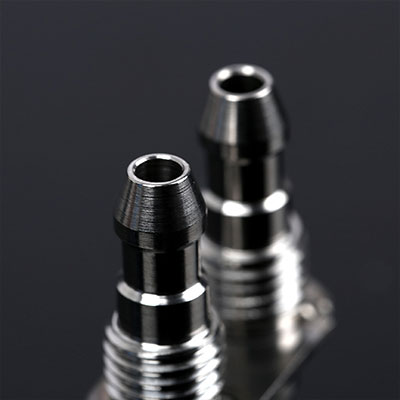The principle of plasma cutting

The principle of plasma cutting is to perform arc discharge between the base metal (including the nozzle in the cutting torch) and the electrode in the cutting torch, and use the heat of the discharge to generate a high-temperature, high-speed plasma arc in the compressed gas to fuse the cutting method of the base metal.
Features of Air Plasma Cutting:
- All metals can be easily cut
- Cut off fast
- The cutting deformation is less, and the cutting can be realized without a fixed fixture
- Unlimited cutting shapes
- Small contact and non-contact cutoff of heat-affected parts are possible
- No need to be skilled, easy to operate.
Widely used in industrial production, especially the welding of copper and copper alloys, titanium and titanium alloys, alloy steel, stainless steel, molybdenum and other metals used in aerospace and other military sheet metal industries and cutting-edge industrial technologies, such as titanium alloy missile casings, on spacecraft Some thin-walled containers, etc.
The type of plasma arc is different according to the connection method of the power supply. There are three types of plasma arc: non-transfer type, transfer type and combined type.
- The tungsten electrode of the non-transfer type plasma arc is connected to the negative end of the power supply, and the nozzle is connected to the positive end of the power supply. The plasma arc is generated between the tungsten electrode and the nozzle. Under the pressure of the plasma gas, the arc column is ejected from the nozzle to form a plasma flame.
- Transfer type plasma arc The tungsten electrode is connected to the negative end of the current, the weldment is connected to the positive end of the current, and the plasma arc is generated between the tungsten electrode and the weldment. Because the transfer arc can transfer more heat to the weldment, the transfer type plasma arc is almost always used for metal welding and cutting.
- Combined plasma arc Non-transferred arc and transfer arc coexist during operation, so it is called combined plasma arc. The non-transferred arc plays the role of stabilizing the arc and supplementary heating, and the transfer arc directly heats the weldment to melt it for welding. Mainly used for microbeam plasma arc welding and powder surfacing.
Transfer type plasma arc In order to establish a transfer type plasma cut arc, the tungsten electrode should be connected to the negative electrode of the power supply, and the nozzle and the weldment should be connected to the positive electrode at the same time. The arc is then quickly connected to the circuit between the tungsten electrode and the weldment, so that the arc is transferred to the tungsten electrode and the weldment to burn directly, and the circuit between the tungsten electrode and the nozzle is cut off at the same time.
Under normal working conditions, the nozzle is not charged, and the plasma arc generated when it starts to ignite is only used as an intermediate medium for establishing a transfer arc.